Types of Mutes
A mute for an instrument lowers the volume and changes the timbre. How the sound changes varies by type. Most mutes clamp into the bell with the help of cork or another soft material to keep the mute in place.
Mutes are occasionally used in classical music, mostly in pieces from the 20th and 21st centuries. Igor Stravinsky, Gustav Mahler, and Paul Hindemith are composers who often use mutes. Jazz ensembles and Big Bands often use trumpet and trombone mutes. This helps blend the sound with other musicians, especially in small jazz ensembles. Brass players also often use a mute when playing with a vocalist.

Types of Mutes
Straight mute
The most common mute is the straight mute. These mutes have a conical shape with a cap at the end. The mute is held in place by three vertical strips of cork. Straight mutes are made from different materials, and the different materials offer different timbres. An aluminum mute sounds bright and clear, while a cardboard mute sounds 'muffled'. These mutes are available for all brass instruments.

Practice Mute
A practice mute is typically used to mute an instrument so you can practice or warm up without disturbing anyone. A practice mute is almost never used in performances. This mute resembles a straight mute but instead of 3 strips of cork, practice mutes have a ring of cork and are filled with foam to further dampen the sound.
Yamaha has designed electronic practice mutes, the silent brass range. These mutes have a 3mm jack and a microphone. This means you can practice without disturbing anyone while hearing the sound of the instrument better.
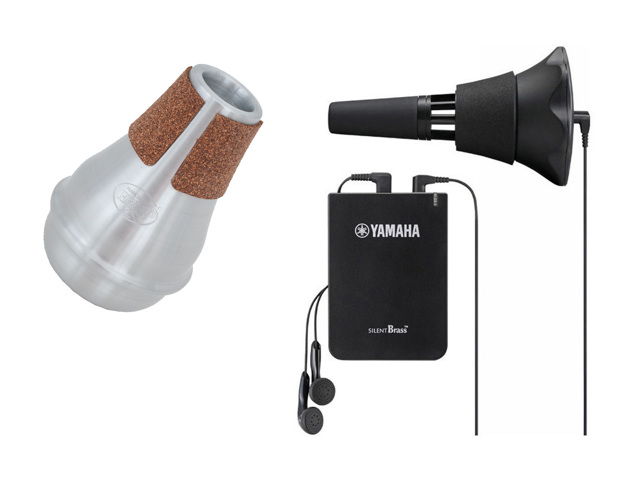
Cup Mute
Cup mutes resemble straight mutes but have a bowl-shaped end that reflects the sound against the bell before projecting it forward. This creates a muted and dark sound. These mutes are made from metal, plastic, and fiber materials. Some cup mutes have an adjustable cup that can be moved closer or further away to further influence the timbre.
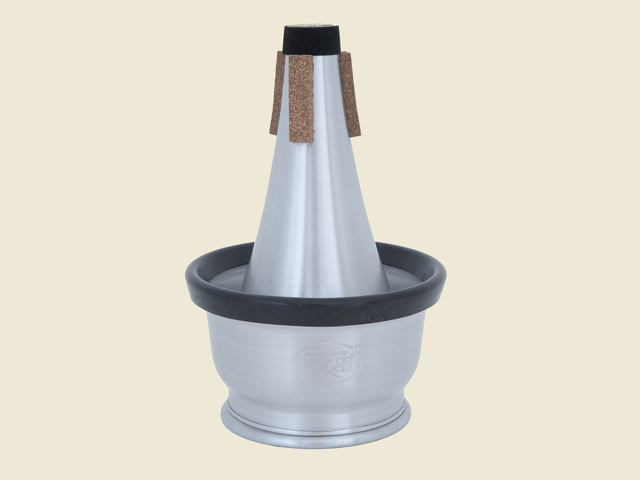
Solotone
The Solotone mute, also known as a "cleartone" mute or mega-mute, has the shape of a long straight mute. Sound baffles inside the mute accentuate high frequencies. The solotone is rarely composed for today, but this mute was popular between 1930 and 1950.
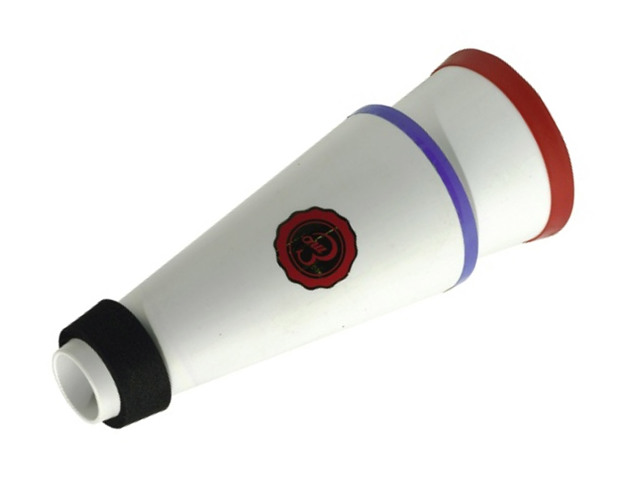
Wah-wah
The wah-wah mute, also known as a Harmon mute, is a hollow, bulbous mute in two parts. This mute completely seals off the bell with a ring of cork so that all the sound must pass through the mute. At the front, there is a bulb with a rod in it, also known as a stem or plunger. This stem can slide in and out of the mute or be removed entirely. Wah-wah mutes create a sharp, tinny sound that can be altered by moving the stem or the cup. These mutes are usually only used on trumpets and trombones.
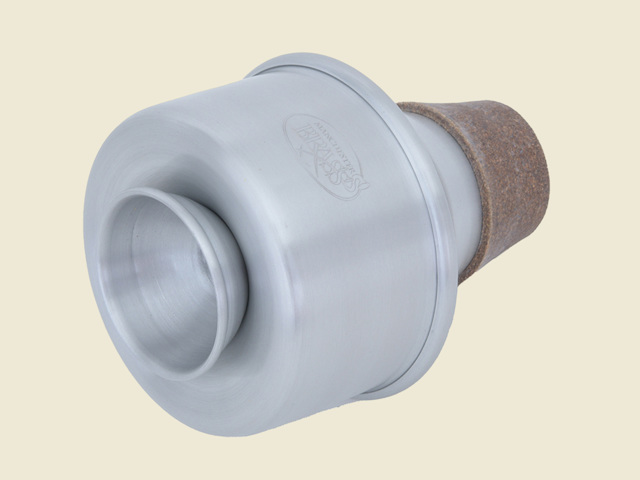
Plunger
Plungers are essentially plungers without a wooden handle. Some musicians cut holes in the rubber to modify the sound. Plunger mutes are often moved in front of the bell. A "closed" plunger sounds approximately the same as a straight mute.
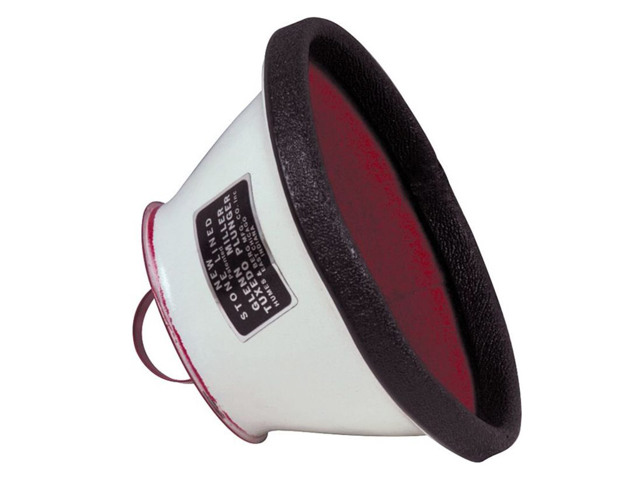
Bucket mute
Bucket mutes are attached to the rim of a bell and contain cotton, foam, or a similar material. This mute removes the high frequencies and creates a soft, muted tone. Some modern bucket mutes are designed as extra-large straight mutes filled with cotton, with large holes on the side. Modern flexible bucket mutes make the transition between muted and unmuted quickly.

Stopping
Stopping is a technique primarily used by horn players. They use their hand to mute the sound instead of a mute. When they fully insert a hand into the instrument, it creates a quieter and more nasal sound. The technique was developed and popularized in the mid-18th century by Anton Joseph Hampel. Gebr. Alexander has also developed a special stopping mute for this purpose. You can see it here on the right and it is available for purchase in our online shop.
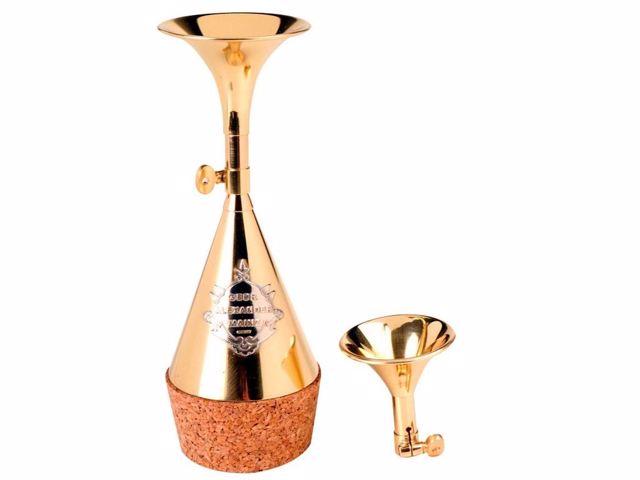
Woodwind Instruments
Due to the way woodwind instruments work, it is not possible to use traditional mutes. Mutes for woodwind instruments are purely to change the sound, not to actually mute it.
Saxophone Mutes
For tenor and alto saxophones, there are Best Brass mutes. This is a box that fits around the entire saxophone, with two holes for the hands and one for the neck of the saxophone. This is necessary because the sound of a saxophone does not only come from the bell, as with a trumpet or trombone.
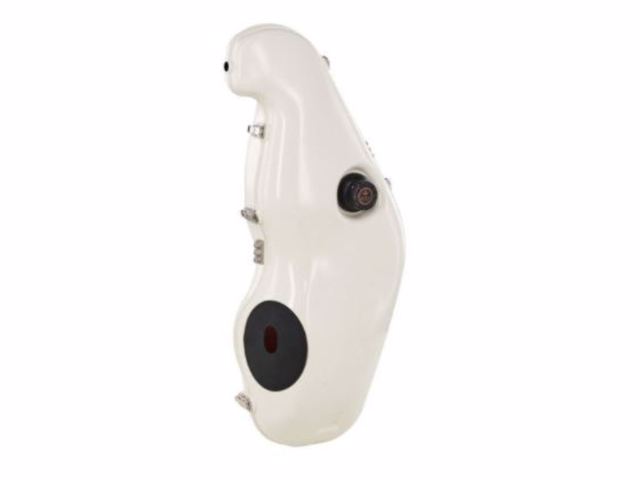
Cloth
By using a cloth, you slightly distort the sound of a woodwind instrument, making the sound more superficial. This makes the low tones more superficial. We recommend using a microfiber cloth for this.
Traffic Cone
There are also artists who use a traffic cone as a mute for saxophones, particularly for the baritone and tenor saxophone. The change in sound is difficult to describe, so we have included a video.